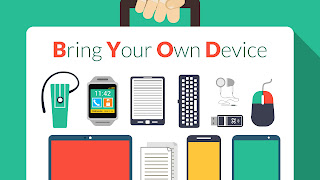Twitter Feed
Watson Crowdsources Cloud Computing
Recently I’ve been doing quite a bit of analysis work using the IBM Watson cognitive business platform. The really exciting thing about this opportunity is the way data can seem…
New Horizons® Delivers CloudMASTER®
For over 30 years, New Horizons has provided more than 30 million students with industry-leading technical training that delivers the most relevant and intuitive computer courses and certifications. They are…
See You At RSA Conference 2017!
JUST ANNOUNCED!! I am personally excited to be delivering the (ISC)² CCSP Two-Day Crash Course at RSA Conference 2017! “The current state of cybersecurity means there are many opportunities for the…
#KnowYourData: The Key to Business
Last week’s Strata-Hadoop conference in New York, NY was showcase of how big data is redefining business. Every company, every demonstration and every conversation highlighted how data is driving the…
A New Chapter: “Cloud Musings en español”
Since May 2010, “Cloud Musings” has demonstrated, educated and celebrated the use of advanced technology in business. Specific subjects are sometimes varied, but cloud computing and cybersecurity seem to have…
Military Tips On Business Resiliency
Photo credit: Shutterstock A steel bar is resistant to stress and is capable of maintaining its form while bearing large loads. While steel is also known as one of the…
Meet Ameet Bakshi: The Insurance CloudMASTER®
Powered by Singapore-based Big Data start-up Crayon Data, BigData-MadeSimple.com tapped the insurance industry as being at the forefront of integrating cloud technology into their digital eco system. As stated in…
Understand The Language Of Data: Strata+Hadoop World and TAP
Our world is driven by data. It may speak in whispers, but it can also scream insight and information to those that understand it’s language. This is why I’ll be…
Transformative Training for Hybrid Cloud
Figure 1- Shawn Bolan, Technical Training Manager, New Horizons of Nebraska, https://www.linkedin.com/in/shawn-bolan-96b8a9103 In a recent CloudTech article multi-cloud, or hybrid cloud, strategy was heralded as “…transformative for businesses, allowing them…
Surviving the coming “Hackerpocalypse”
Photo credit: Shutterstock With all the excellent training available on television today, we are all now well prepared to deal with the coming Zombie Apocalypse. Our failure as a society…
- Increased employee mobility (63%), satisfaction (56%) and productivity (55%) dominate as the top drivers of BYOD. These employee related drivers are considered more important than reduced costs (47%).
- Security (39%) and employee privacy (12%) are the biggest inhibitors of BYOD adoption.
- 20% of surveyed organizations have suffered a mobile security breach, primarily driven by malware and malicious WiFi.
- Security threats to BYOD impose heavy burdens on organizations’ IT resources (35%) and help desk workloads (27%).
- Despite increasing mobile security threats, data breaches and new regulations, only 30% of organizations are increasing security budgets for BYOD in the next 12 months and 37% have no plans to change their security budgets.
- 72% – Data leakage/loss
- 56% – Unauthorized access to company data and systems
- 54% – Downloading of unsafe apps or content
- 52% – Malware
- 50% – Lost or stolen devices
- 49% – Vulnerability exploitation
- 48% – Lack of control on endpoint security
- 39% – Infrequent software updates
- 38% – Compliance
1. Create your policy before procuring technology: To effectively use mobile device management (MDM) technology for employee owned devices Policy must precede technology. Also note that these policies will have broad corporate-wide implications for IT, HR, legal, and security.
- Mobile device management
- Application security assessments
- Application testing services
- Application source code security assessments; and
- Embedded device security.
This post was brought to you by IBM Global Technology Services. For more content like this, visit ITBizAdvisor.com.
( Thank you. If you enjoyed this article, get free updates by email or RSS – © Copyright Kevin L. Jackson 2017)
Cloud Computing
- CPUcoin Expands CPU/GPU Power Sharing with Cudo Ventures Enterprise Network Partnership
- CPUcoin Expands CPU/GPU Power Sharing with Cudo Ventures Enterprise Network Partnership
- Route1 Announces Q2 2019 Financial Results
- CPUcoin Expands CPU/GPU Power Sharing with Cudo Ventures Enterprise Network Partnership
- ChannelAdvisor to Present at the D.A. Davidson 18th Annual Technology Conference
Cybersecurity
- Route1 Announces Q2 2019 Financial Results
- FIRST US BANCSHARES, INC. DECLARES CASH DIVIDEND
- Business Continuity Management Planning Solution Market is Expected to Grow ~ US$ 1.6 Bn by the end of 2029 - PMR
- Atos delivers Quantum-Learning-as-a-Service to Xofia to enable artificial intelligence solutions
- New Ares IoT Botnet discovered on Android OS based Set-Top Boxes


